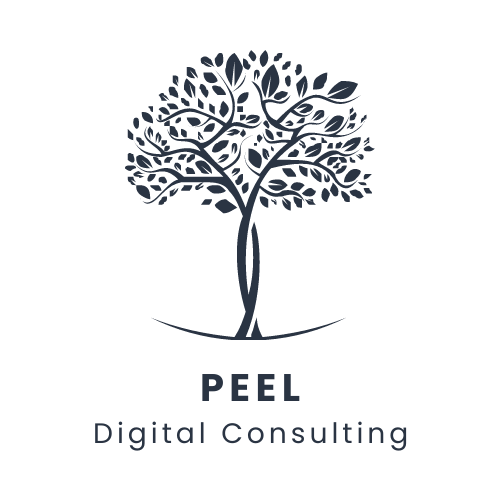As we already started 2025, the marketing landscape is undergoing rapid transformation, driven by technological advancements, evolving consumer behaviors, and heightened competition.
In this blog, we’ll explore the key trends set to shape the marketing industry in this new year, providing insights into how businesses can adapt and thrive in an increasingly dynamic environment. From the rise of AI-driven personalization to the growing importance of sustainability, understanding these trends will empower marketers to stay ahead of the curve and effectively engage their audiences.
Join us as we delve into the future of marketing and uncover the strategies that will define success in 2025 and beyond.
1. The Impact of Technology on Marketing Strategies
In the rapidly evolving landscape of marketing, technology is fundamentally transforming strategies and driving innovation across the industry. The integration of artificial intelligence (AI) and machine learning has emerged as a game changer, allowing businesses to analyze vast amounts of data, predict consumer behavior, and personalize marketing efforts with unprecedented accuracy.
Tools such as customer relationship management (CRM) systems powered by AI, chatbots for real-time customer engagement, and predictive analytics platforms not only enhance efficiency but also foster deeper connections with target audiences.
By leveraging these AI-driven marketing tools, businesses can optimize their campaigns, boost customer retention, and ultimately gain a competitive edge in an increasingly digital marketplace.
2. The Evolution of Search and Commerce
The integration of voice search in commerce has significantly changed the way consumers interact with products and services. Voice commerce allows users to easily and seamlessly make purchases, ask for recommendations, and access information using just their voice.
As a result, businesses must adapt their digital marketing strategies to cater to this shift in consumer behavior, incorporating long-tail keywords and natural language phrases into their SEO efforts to effectively reach their target audience.
3. The Rise of Social Commerce
As social commerce continues to rise, brands are shifting their focus from solely selling through their own websites to leveraging social media platforms as primary sales channels.
By integrating features such as shopping carts, product tagging, and checkout functionalities, social media platforms are enabling brands to reach their target audiences in a more engaging and immersive manner.
This seamless integration is redefining the boundaries between social media and e-commerce, forcing traditional e-commerce models to adapt and evolve to remain competitive in the market.
4. Immersive Experiences with AR/VR Technologies
The rapid adoption of (Augmented Reality) and VR (Virtual Reality) technologies in retail is revolutionizing consumer engagement, allowing brands to craft immersive shopping experiences that captivate and involve customers more intricately than traditional methods.
This new wave of interaction not only reshapes consumer expectations within retail, but also spills over into other sectors like travel and entertainment, where immersive experiences redefine how audiences perceive and interact with brands.
By leveraging AR and VR, companies can enhance brand storytelling, offering dynamic and memorable narratives that draw consumers into their worlds, fostering deeper connections and loyalty. As these technologies continue to advance, the future promises even more innovative applications, transforming the way we experience products and stories alike.
5. Embracing Hyper-Personalization Strategies
Embracing hyper-personalization strategies is crucial for brands seeking to deepen customer engagement and loyalty, as it leverages advanced AI insights to tailor experiences uniquely to each consumer.
By mapping out distinct user journeys, businesses can effectively identify and target specific needs, preferences, and behaviors at every stage of the customer lifecycle—from awareness to retention. This targeted approach not only enhances the relevance of marketing communications but also fosters a stronger emotional connection with consumers, ultimately driving conversions and advocating for brand loyalty in an increasingly competitive market.
6. Adapting to Privacy Regulations in a Cookieless Future
As privacy regulations continue to evolve, ensuring data privacy compliance is paramount in all facets of digital marketing, from ad targeting to website tracking. Marketers must prioritize building trust with consumers by adopting transparent practices and utilizing data responsibly.
To prepare for a cookieless future, organizations can implement first-party data strategies, leveraging customer relationships to gather insights directly while respecting user consent.
Additionally, exploring contextual advertising and exploring alternatives such as server-side tracking can maintain effective targeting methods. By embracing a holistic approach that combines compliance, transparency, and innovative tracking solutions, brands can successfully navigate the changing landscape of digital marketing.
Conclusion
As we navigate the exciting yet challenging marketing landscape of 2025, the ability to remain agile in response to rapid technological advancements and evolving consumer preferences becomes paramount. Embracing key trends—such as personalized marketing, AI integration, and sustainability—will enable brands to stay ahead of the curve.
At Peel Digital Consulting, we are dedicated to equipping small and large businesses with tailored digital marketing strategies and insights to thrive in this dynamic environment.
Partner with us to ensure your digital marketing efforts are not only relevant but also impactful, helping you connect meaningfully with your audience while driving growth. Schedule your free consultation today!


